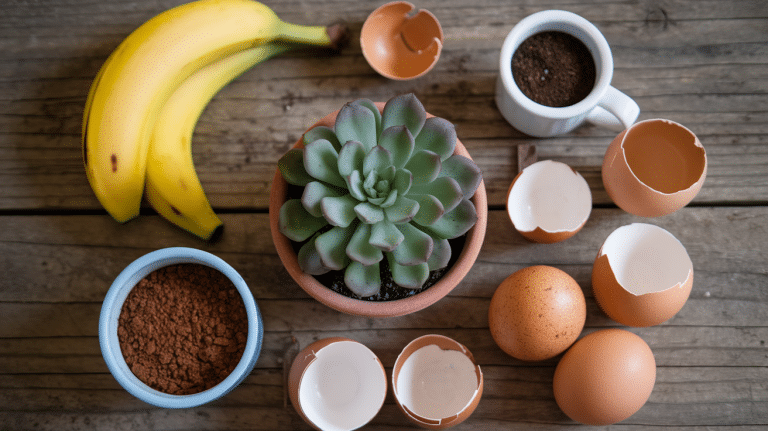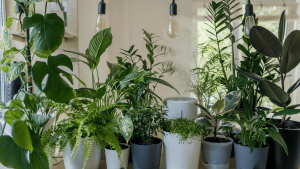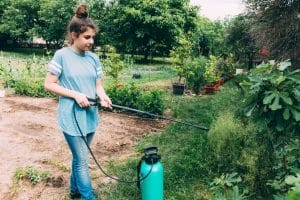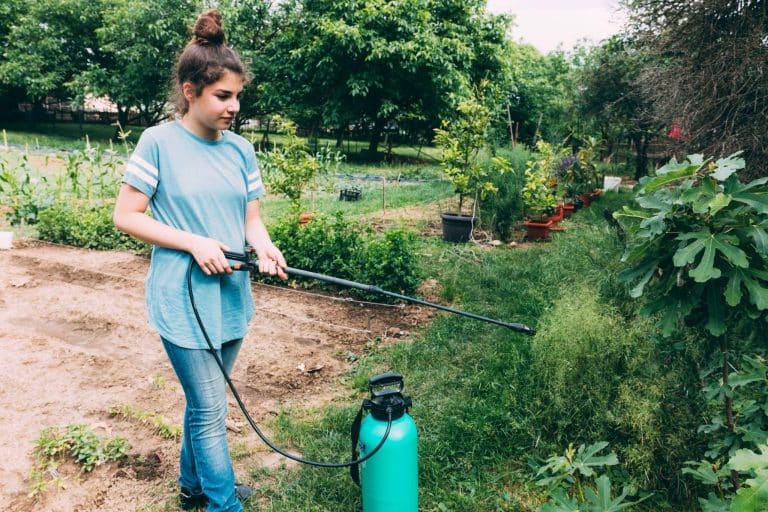Are you looking for ways to help your plants grow without spending money on store-bought products? The answer might be in your kitchen right now.
Natural plant foods made from everyday household items offer a simple solution that works better than many people think.
These homemade options not only feed your plants but also build healthier soil over time.
In this guide, we’ll walk through 17 easy-to-make plant-based foods using items you already have at home.
You’ll learn how to make them, when to use them, and how to avoid common mistakes. Get ready to turn your kitchen scraps into plant-boosting power while saving money and helping the environment.
What is Natural Plant Food?
Natural plant food refers to fertilizers made from everyday items found in your home or garden that provide important nutrients to help plants grow.
Unlike store-bought options with chemicals, these homemade plant foods use things like kitchen scraps and household items that plants can use to stay healthy.
Using homemade plant foods instead of store-bought chemical fertilizers has several advantages. First, they cost much less money, and second, they use items you already have.
These natural options also work well because they break down slowly, giving plants nutrients over a longer time.
They improve the soil and don’t harm helpful bugs or small creatures in your garden. Plus, making your own plant food reduces waste, as you’re using things that might otherwise be thrown away.
The Benefits of Using Homemade Fertilizers
Making your own plant food at home offers many benefits for your garden and wallet. With simple items from your kitchen and home, you can create effective plant foods that help your garden grow well.
Sustainable and Eco-Friendly
Creating your plant food helps reduce waste by putting kitchen scraps to good use. Instead of throwing away banana peels, eggshells, or coffee grounds, you can turn them into helpful plant food.
This method reduces packaging waste from store-bought options and uses items that would otherwise end up in the trash.
Cost-Effective Gardening
Store-bought plant foods can be costly, but homemade versions use items you likely already have. Coffee grounds, eggshells, and banana peels are free resources that would normally be thrown away.
By using these everyday kitchen leftovers, you can feed your plants without spending extra money.
Healthier Plants
Homemade plant foods add needed nutrients to soil in a gentle, natural way. Unlike some chemical options, these natural foods build up soil health over time.
Plants grown with organic homemade foods often show better growth, more blooms and can fight off pests and diseases better. The slow-release nature of these foods means they provide steady nutrition without the risk of burning plants.
Easy Organic Fertilizers to Make at Home
Your kitchen and home contain many items that can be turned into highly useful plant food. These simple options are quick to make and use common items you might otherwise throw away. Here are six easy ways to feed your plants using everyday household items.
1. Banana Peel Fertilizer
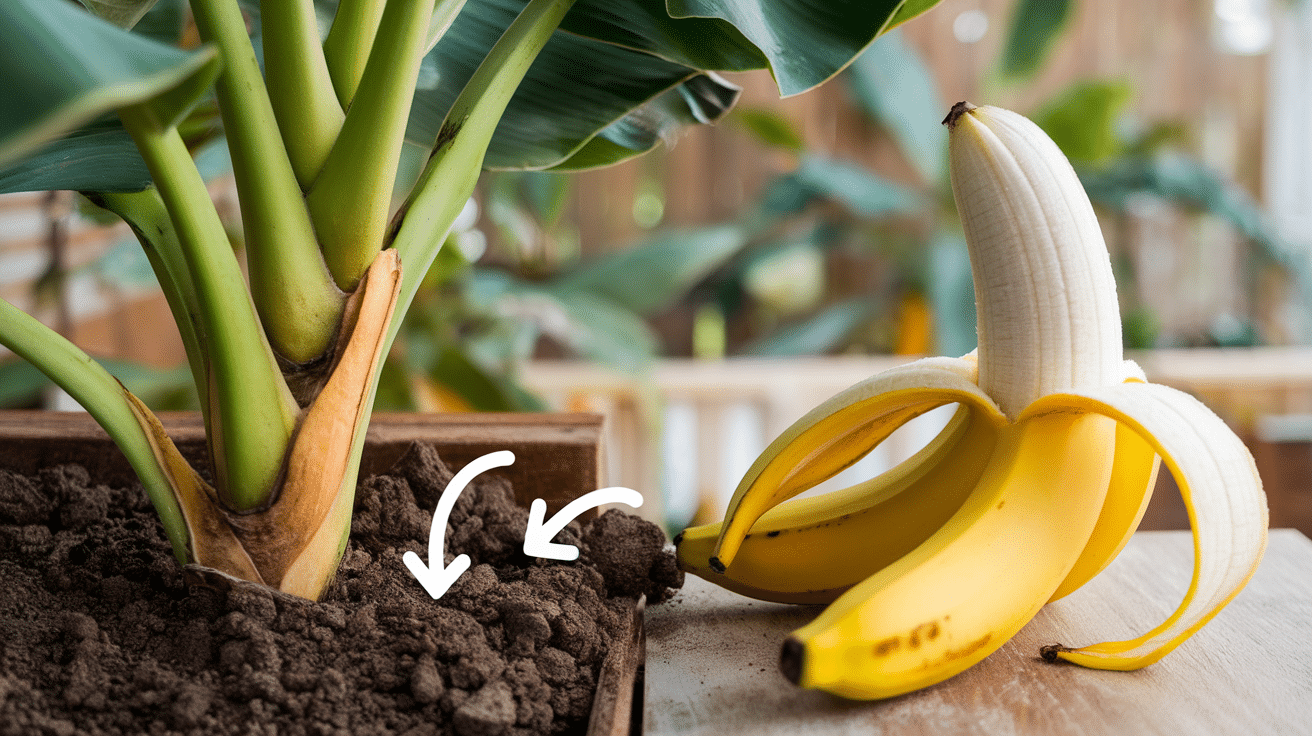
Banana peels add potassium and phosphorus to soil, helping plants produce more flowers and fruits.
You can use them by burying chopped peels near plant roots, where they’ll break down slowly. For faster results, soak peels in water for 2-3 days to make a liquid feed for your plants.
2. Coffee Grounds
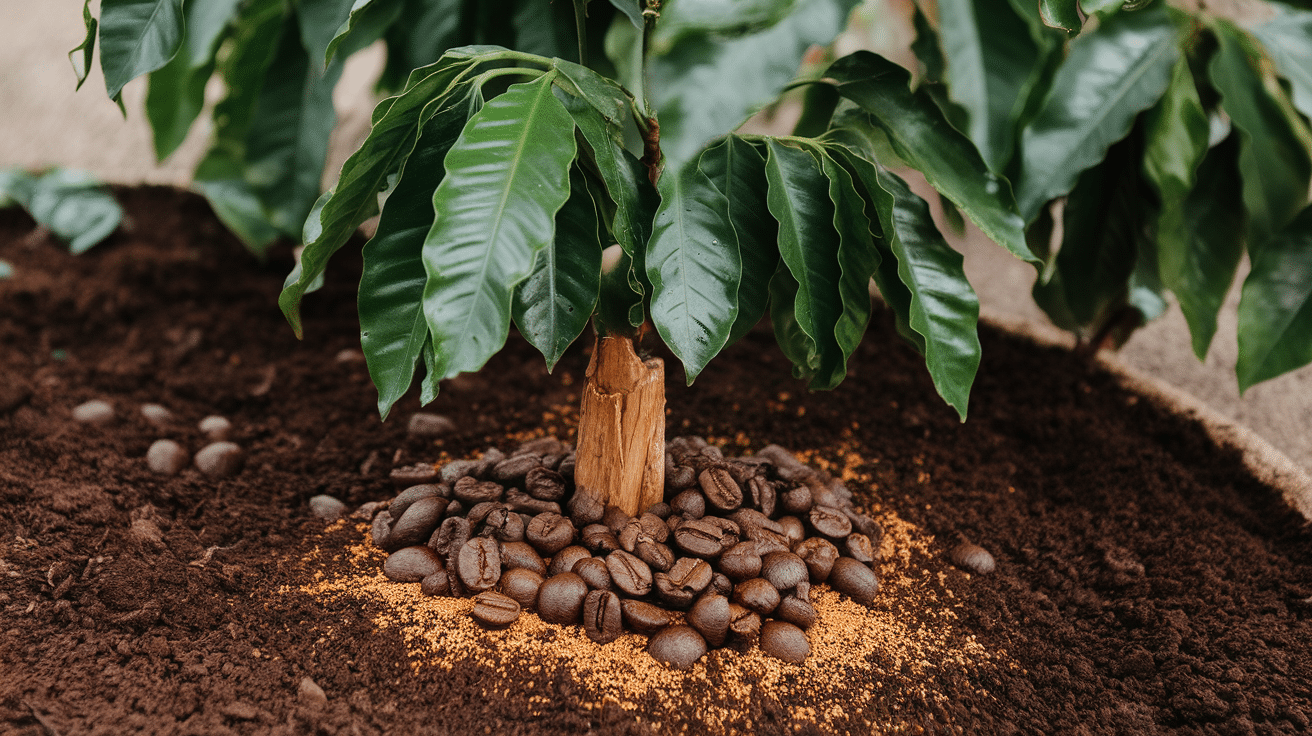
Used coffee grounds give plants nitrogen, which helps them grow new leaves. They work best for plants that like acidic soil, such as roses, blueberries, and tomatoes.
Sprinkle a thin layer of dried grounds on the soil surface, or soak 1 cup of grounds in 4 cups of water overnight for a liquid feed.
3. Eggshell Fertilizer
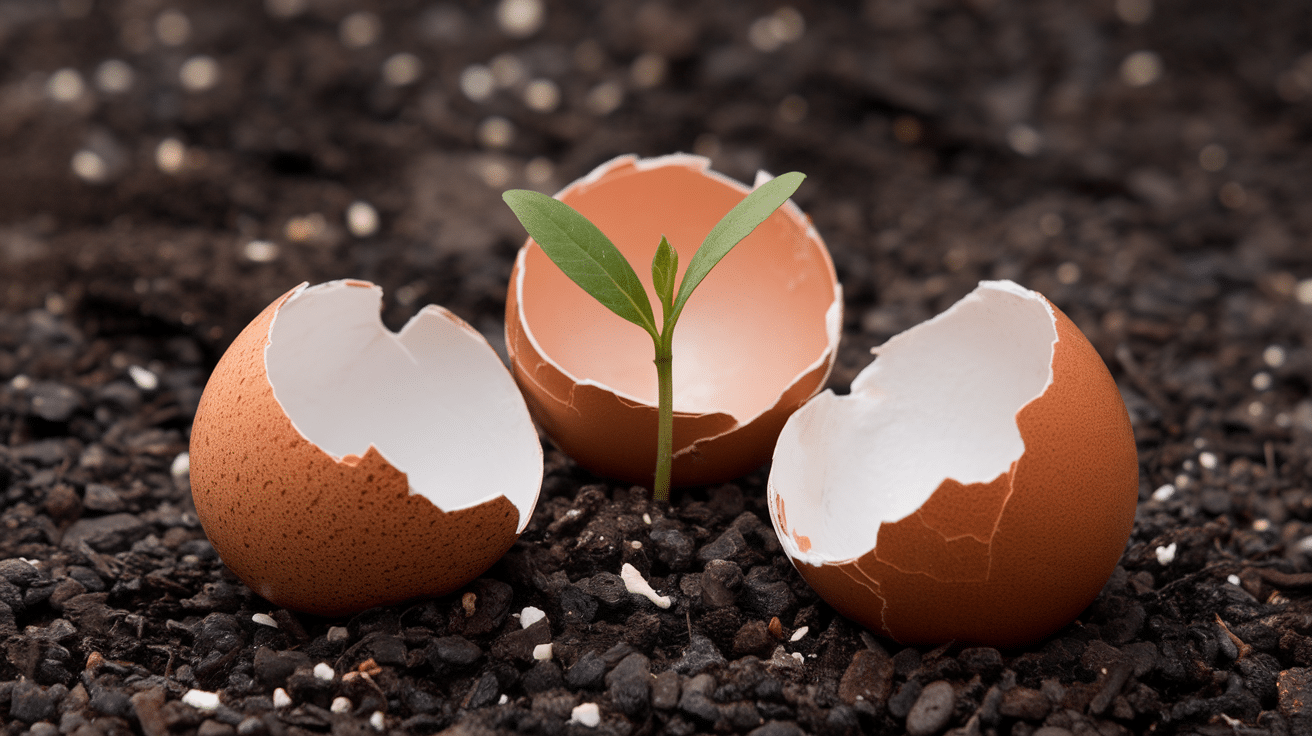
Eggshells provide calcium that makes plant cell walls strong and helps roots grow well. Clean shells, let them dry, then crush them into small bits.
Mix the crushed shells into the top layer of soil around plants, or add them to your compost pile where they’ll break down over time.
4. Fish Tank Water
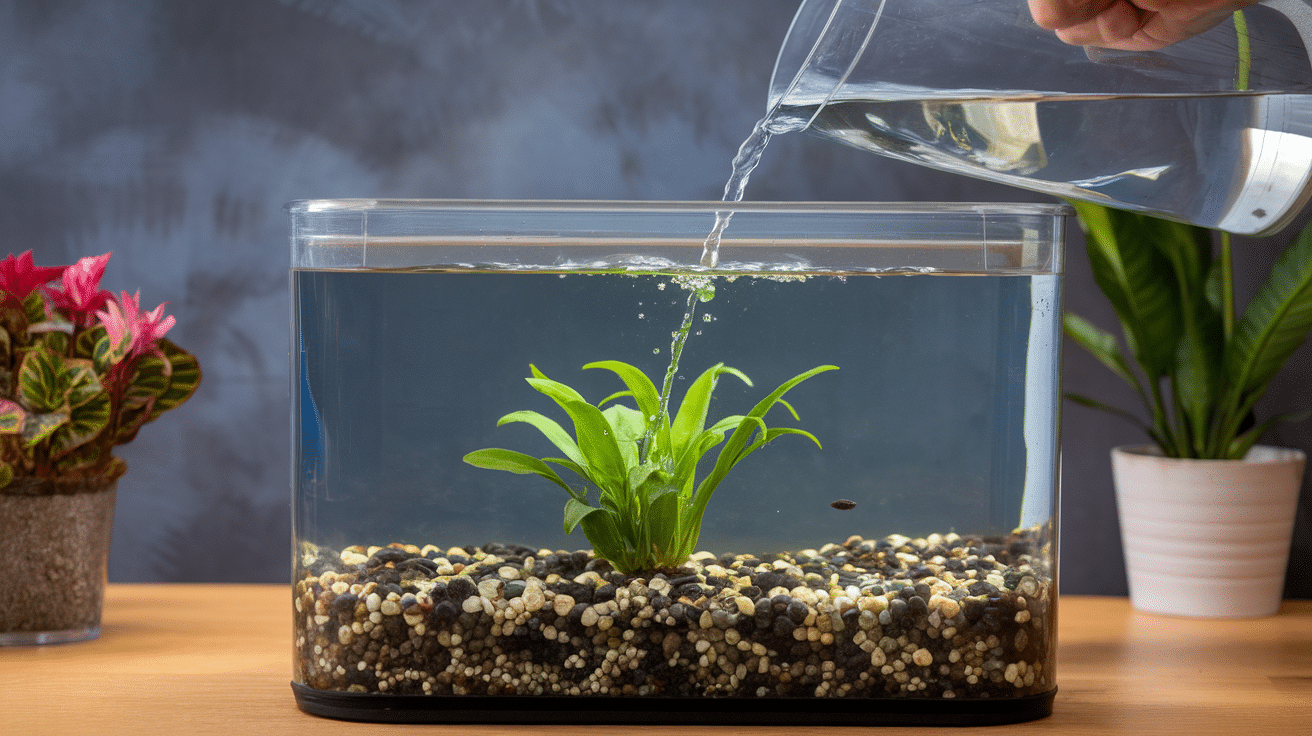
When you clean your fish tank, the old water contains helpful nutrients from fish waste. This water works well for indoor and outdoor plants, making their leaves greener.
Use the old tank water in place of regular water the next time you water your plants.
5. Epsom Salt Solution
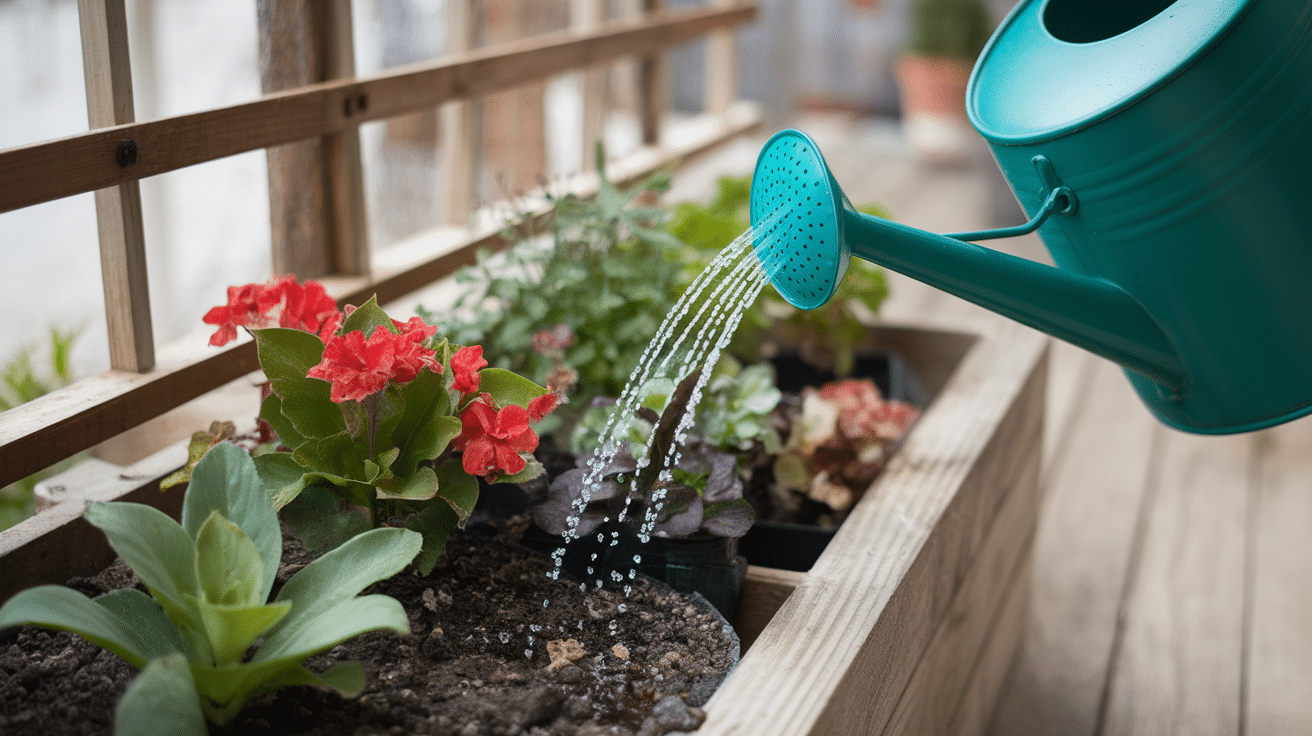
Epsom salt gives plants magnesium, which they need to make food through their leaves.
Add 1 tablespoon of Epsom salt to 1 gallon of water, and water your plants with this mix once a month. This works well for tomatoes, peppers, and roses, which often need extra magnesium.
6. Green Tea Fertilizer
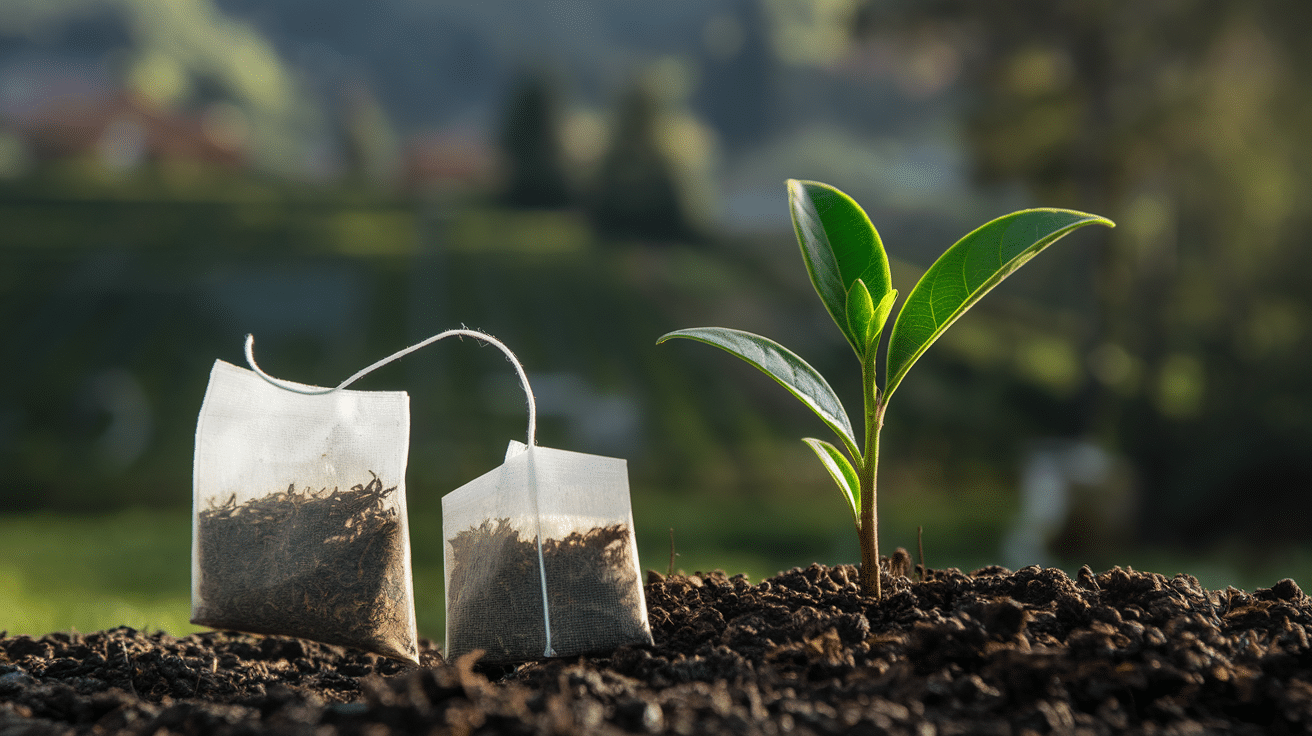
Used tea bags or loose tea leaves give plants nitrogen and small amounts of other helpful minerals.
Brew 2-3 tea bags in a gallon of water, let it cool fully, then water your plants with this mix. The gentle nutrients help plants grow without the risk of burning them.
7. Compost Tea
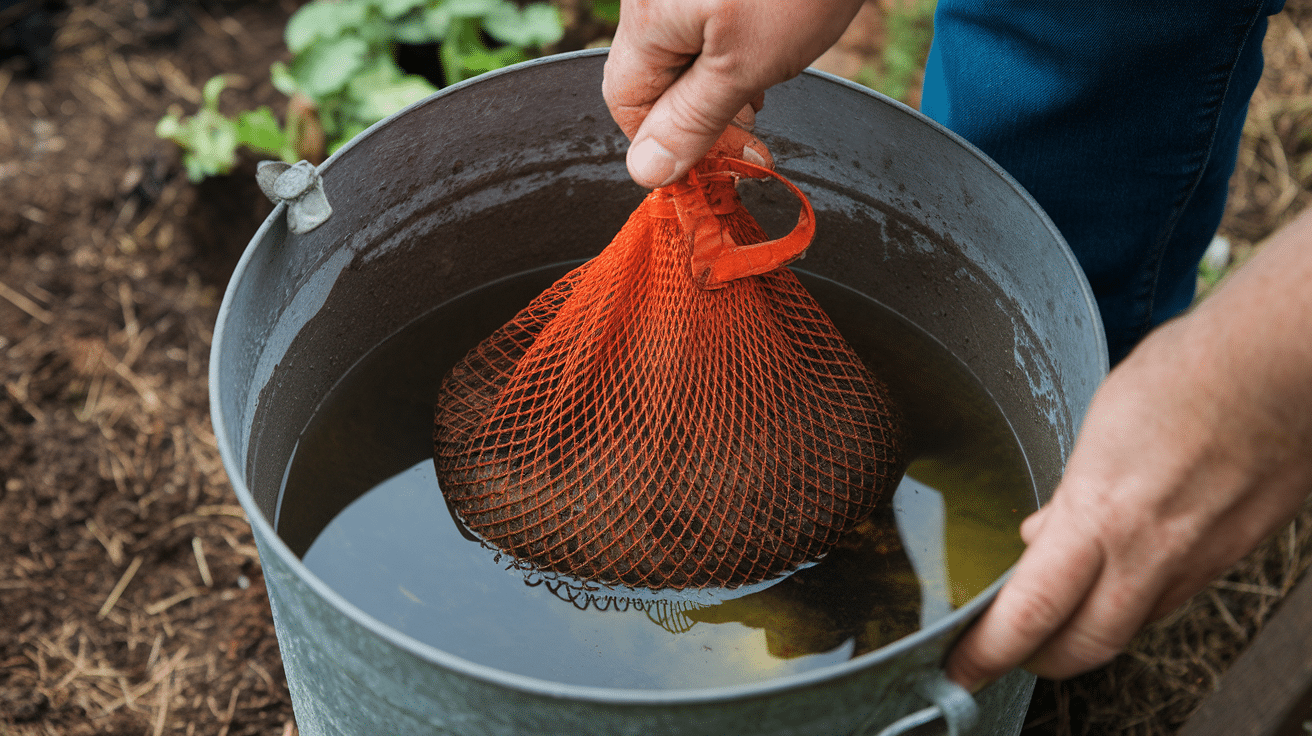
Compost tea helps soil hold water better while adding useful nutrients for plant growth. To make it, put a cup of compost in a cloth bag, then steep it in a bucket of water for 2-3 days.
Strain the liquid and water your plants with this brown tea to feed them and build soil health.
8. Fish Emulsion

Fish parts contain nitrogen, phosphorus, and potassium that feed plants and help them grow strong.
To make this at home, put fish scraps in a container with water (1 part fish to 2 parts water), cover it loosely, and let it sit for 2 weeks. Strain the mix and use it at a rate of 1 cup per gallon of water.
9. Alfalfa Meal Fertilizer

Alfalfa meal gives plants a good mix of nitrogen, phosphorus, and potassium for healthy growth.
It works as both a short-term and long-term plant food. Mix 1 cup of alfalfa meal into the soil around plants or add it to your compost pile to improve the compost.
10. Molasses Fertilizer

Molasses feed helpful soil microbes that break down plant food so roots can use it.
Mix 1-3 tablespoons of unsulfured molasses with a gallon of water and use it to water plants. This sweet mix helps plants form better roots and take in more nutrients from the soil.
11. Seaweed Fertilizer

Seaweed contains small but important nutrients that many other plant foods lack. To prepare fresh seaweed, rinse the salt off and soak it in a bucket of water for 2-3 weeks.
The liquid can be used at half strength to water plants, giving them trace elements that help fight stress.
12. Grass Clippings

Lawn clippings contain nitrogen, which helps plants grow leafy and green. After mowing, spread a thin layer of dry grass clippings around plants as a mulch, which will slowly break down and feed them.
For faster results, add fresh clippings to your compost pile, where they heat up and break down quickly.
13. Vegetable Scraps
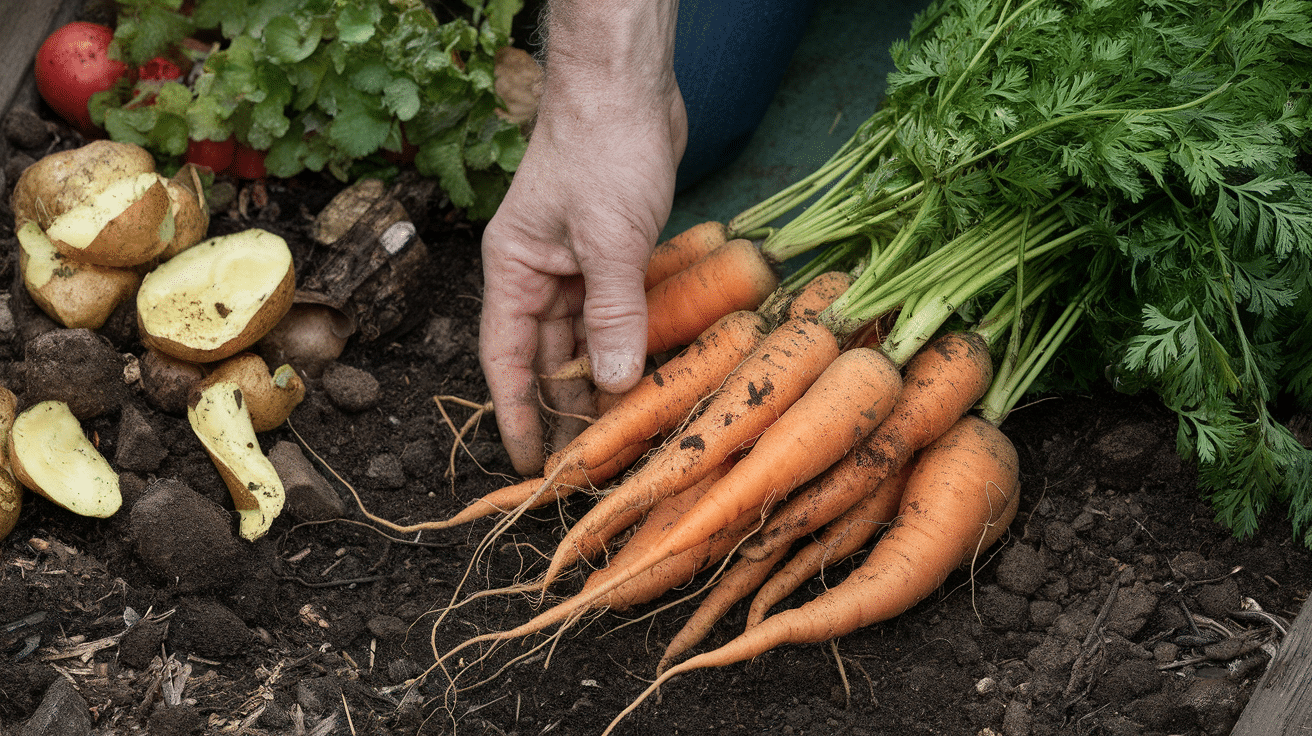
Kitchen vegetable scraps, such as carrot tops, potato peels, and lettuce ends, can feed your plants instead of filling your trash.
Collect scraps in a container and bury them 8-10 inches deep in garden soil where they’ll break down, or blend them with water to make a quick liquid plant food.
14. Used Tea Bags
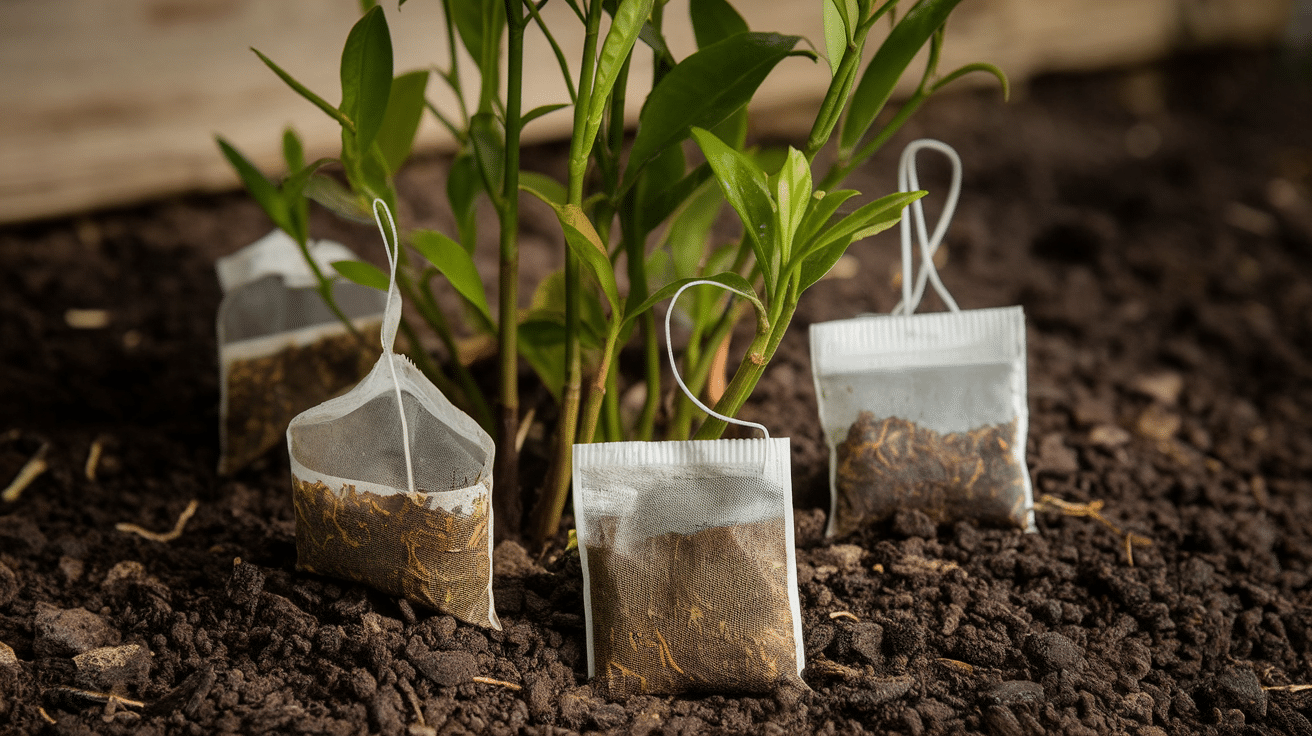
Tea leaves contain small amounts of nitrogen and other nutrients that plants can use.
After brewing tea, let the bags cool and place them around the base of plants, where they’ll slowly break down. You can also open the bags and sprinkle the wet leaves directly onto the soil.
15. Homemade Bone Meal
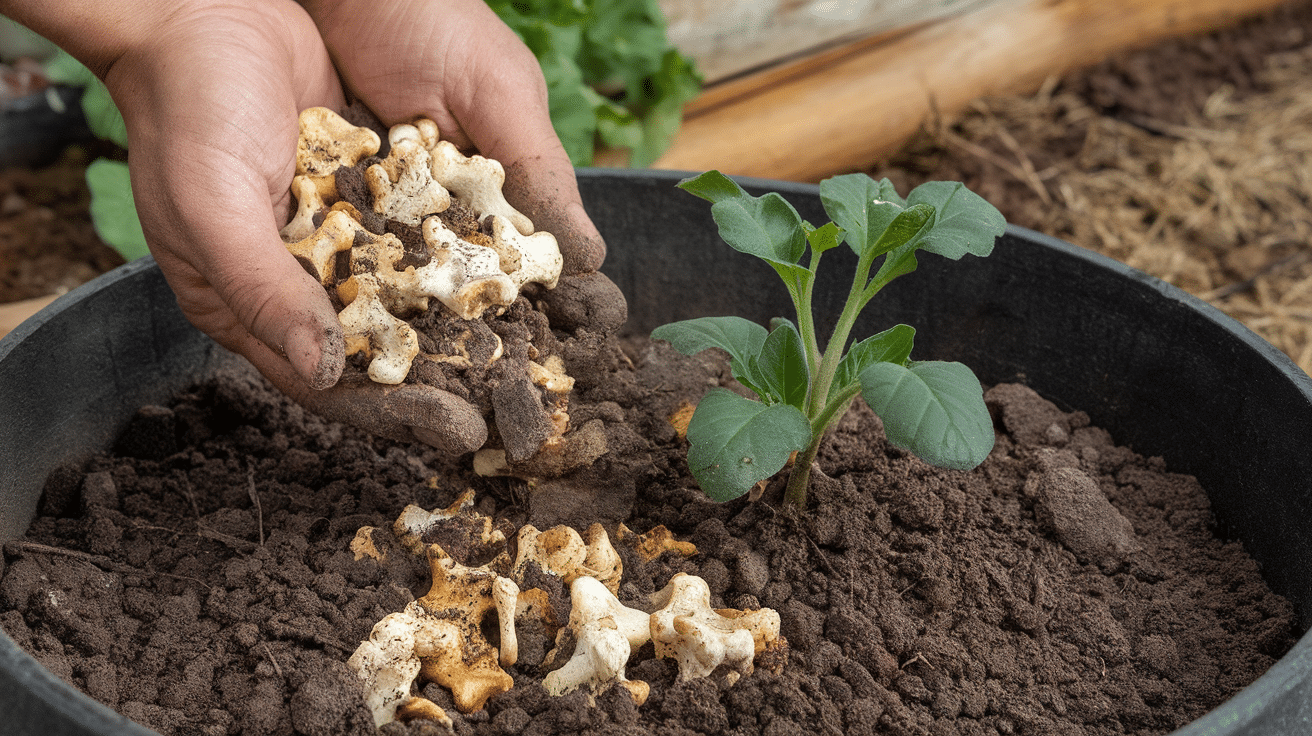
Bones from meat contain phosphorus that helps plants make more flowers and better fruits.
Clean the bones, bake them until dry, and then crush them into small pieces. Mix the crushed bones into the soil around flowering plants and fruit trees to help them produce more blooms and fruit.
16. Soybean Fertilizer
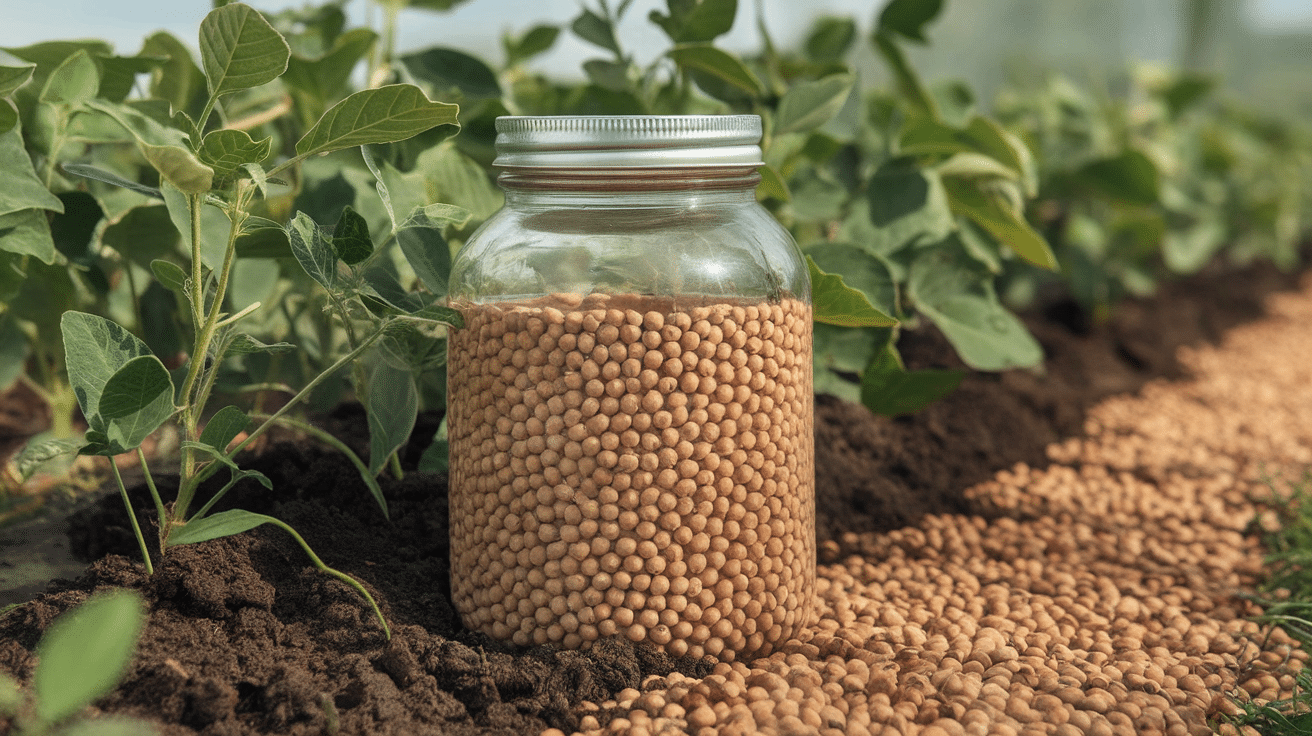
Soybeans improve soil quality and add nutrients that help plants grow well. Soak dried soybeans in water for 24 hours, then strain and keep the water.
Soybean water improves soil drainage while providing plants with the protein-based nutrients they need to grow strong and healthy.
17. Garlic Peel Water
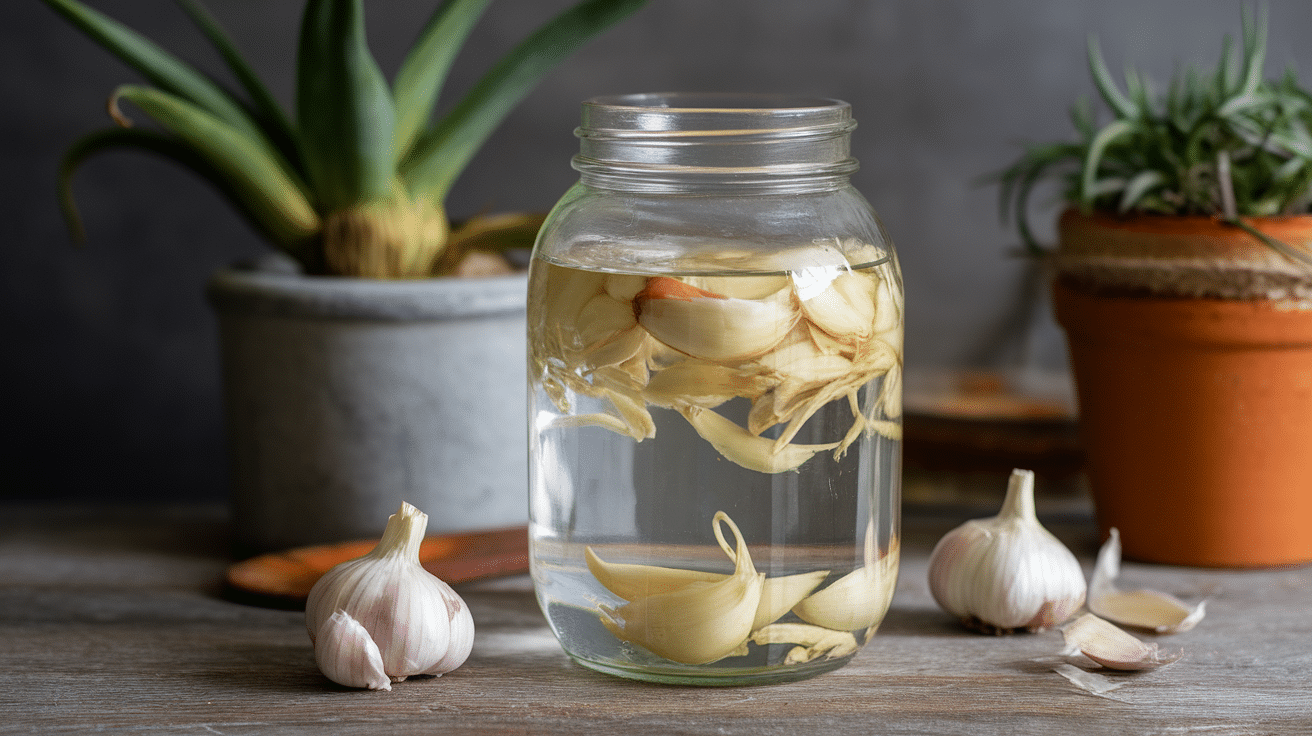
Garlic peels not only feed plants but also keep pests away with their strong smell. Save garlic peels in a jar, add water, and let sit for 24 hours.
Strain and spray this water on plants to both feed them and keep bugs from eating them. It works well on both indoor and outdoor plants.
How to Apply Homemade Fertilizers
Using homemade plant foods requires proper timing and methods. This quick guide will help you know when and how to apply your natural plant foods for the best results.
The right approach ensures your plants get nutrients without waste or harm.
Application Methods
| Fertilizer Type | How to Apply | How Often | Tips |
|---|---|---|---|
| Liquid Fertilizers (banana water, tea, compost tea) | Pour directly onto soil | Every 2-4 weeks | Water plants first; use half-strength for indoor plants |
| Solid Fertilizers (coffee grounds, eggshells) | Mix into the top 1-2 inches of soil | Every 4-8 weeks | Keep away from stems; water well after applying |
| Compost & Mulches (grass clippings, scraps) | Spread a 1-2 inch layer around plants | 2-3 times yearly | Keep 2 inches away from stems to prevent rot |
Plant Signals
| Look For | What It Means |
|---|---|
| Yellow-green leaves, slow growth | Time to feed plants |
| Brown leaf edges, wilting despite moist soil | Too much fertilizer applied |
| Healthy green leaves, steady growth | Perfect balance |
Start with less rather than more when using homemade plant foods. You can always add more if needed.
Maintaining Healthy Soil with Natural Plant Food
Good soil is the foundation of plant health. Natural plant foods build soil quality over time, unlike chemical options that merely feed plants.
Kitchen scraps and household items create living soil that supports natural plant growth by building organic matter, supporting beneficial microbes, improving water retention, and preventing nutrient loss.
They maintain balanced pH levels, reduce soil compaction, promote long-term fertility through regular use, and prevent harmful toxic residues that can accumulate with chemical fertilizers.
The organic matter from natural feeds improves soil structure, keeping it loose for root growth.
At the same time, beneficial bacteria and fungi break down nutrients in a slow-release process that minimizes nutrient runoff.
Alternative Homemade Plant Food Solutions
In addition to the basic options, you can make more complex plant foods at home using common materials.
These methods help you create special mixes for different plant needs and growing conditions without buying costly store products.
Organic Liquid Fertilizers
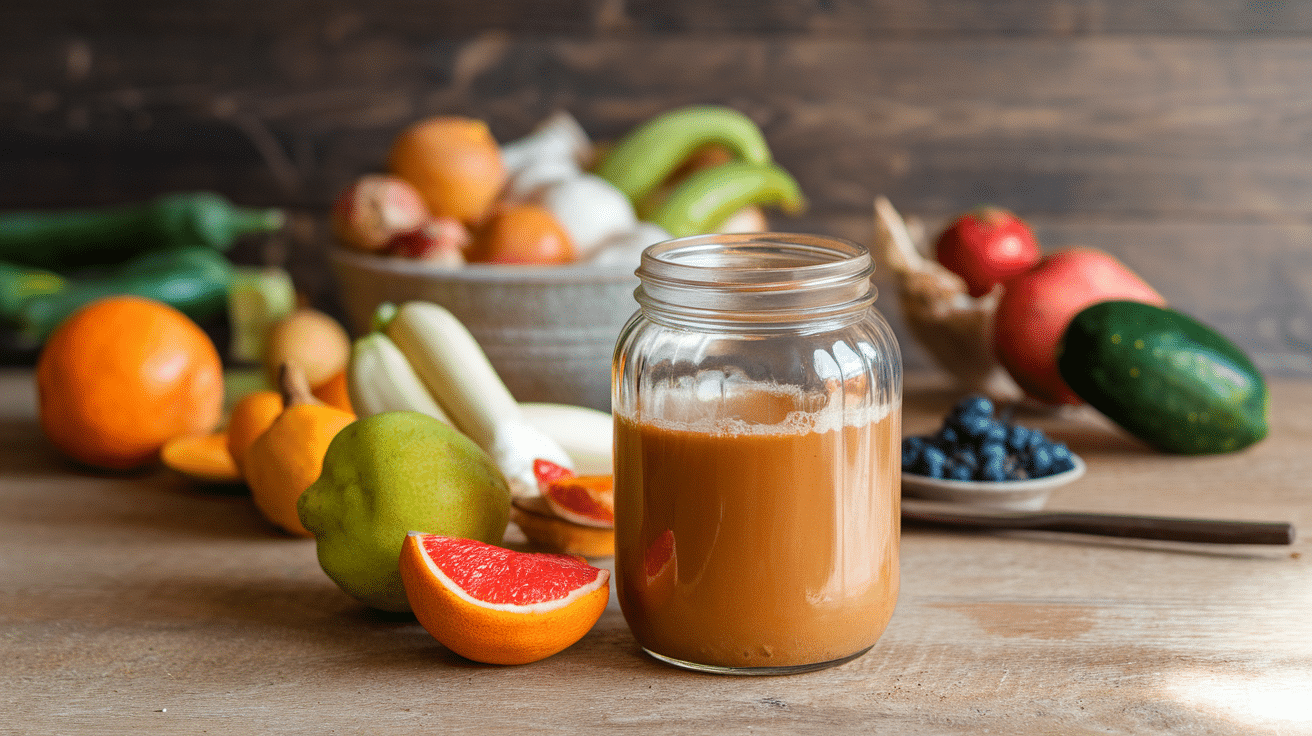
Kitchen waste can be turned into powerful liquid plant food with simple steps. Collect fruit and vegetable scraps in a bucket, add water to cover them completely, and let sit for 1-2 weeks with an occasional stir.
Strain the liquid, then use it at half-strength to water plants. This brew provides a quick boost of mixed nutrients that plants can use right away.
Slow-Release Fertilizers

For plants that need steady feeding over time, you can make slow-release options at home. Mix dried plant matter like leaves or coconut coir with kitchen scraps and aged manure.
Pack this mix into small cloth bags or old stockings, then bury them near plant roots.
As the materials break down over months, they release nutrients slowly for long-term plant health without the need for frequent feeding.
Troubleshooting and Common Mistakes with Homemade Fertilizers
Most issues occur from applying too much or using the wrong type for specific plants. When making homemade plant foods, it’s important to start with small amounts and observe how your plants respond.
Unlike store-bought options with exact measurements, homemade versions vary in strength based on ingredients and preparation methods.
The good news is that problems caused by natural plant foods are usually easier to fix than those caused by chemical options, and with a few simple steps, you can keep your plants healthy.
- Use half the recommended amount for first applications.
- Always dilute liquid plant foods more than seems necessary.
- Mix different food types for a better nutrient balance.
- Yellow leaves often indicate a nitrogen shortage.
- Poor flowering suggests a need for phosphorus.
- Flush soil with plain water if plants look worse after feeding.
- Label and date your homemade mixes for future reference.
Conclusion
Making your plant food at home offers many benefits that store-bought options can’t match. By using items from your kitchen and yard, you save money while reducing waste.
These natural options work with nature, not against it, building soil health over time rather than just feeding plants.
Start with simple options like banana peels or coffee grounds, then try more complex mixes as you learn what works best in your garden. Keep track of what your plants like, and don’t be afraid to adjust your methods based on the results.
With some basic items and a bit of patience, you can grow healthier plants while being kind to both your wallet and the earth.


